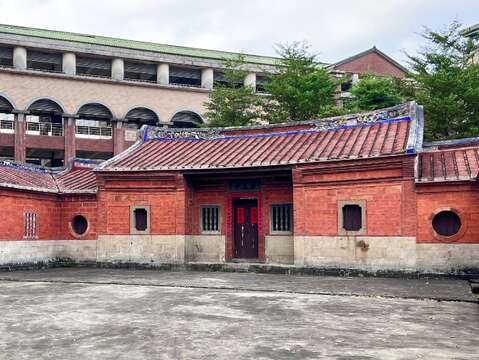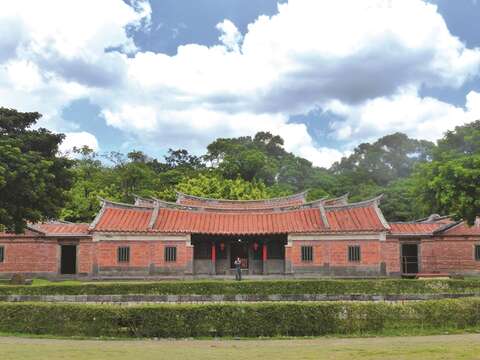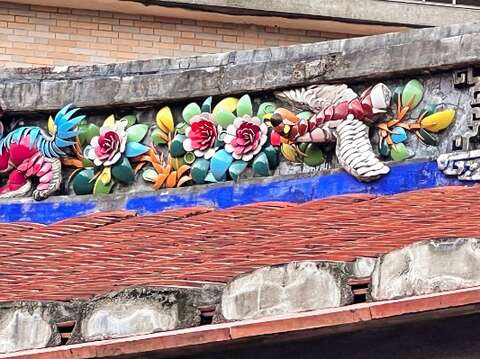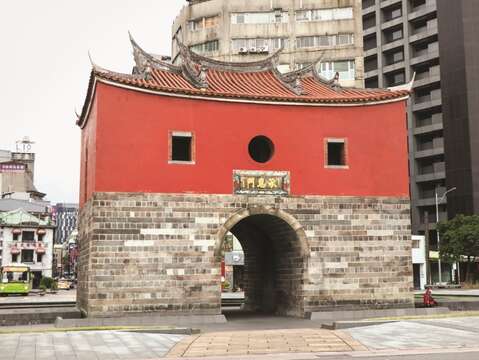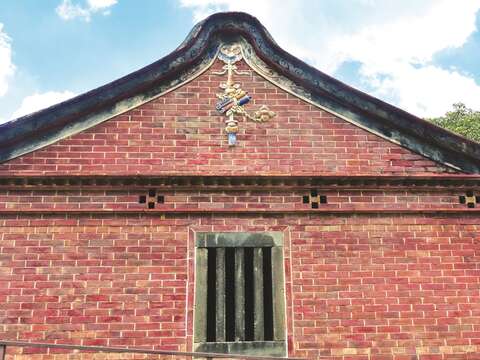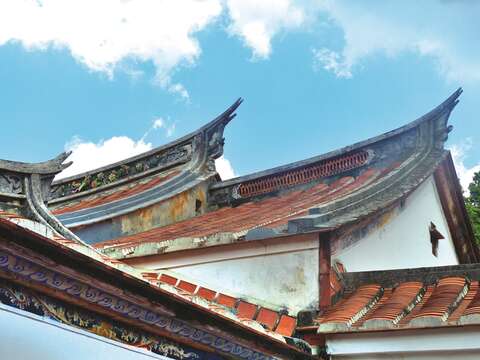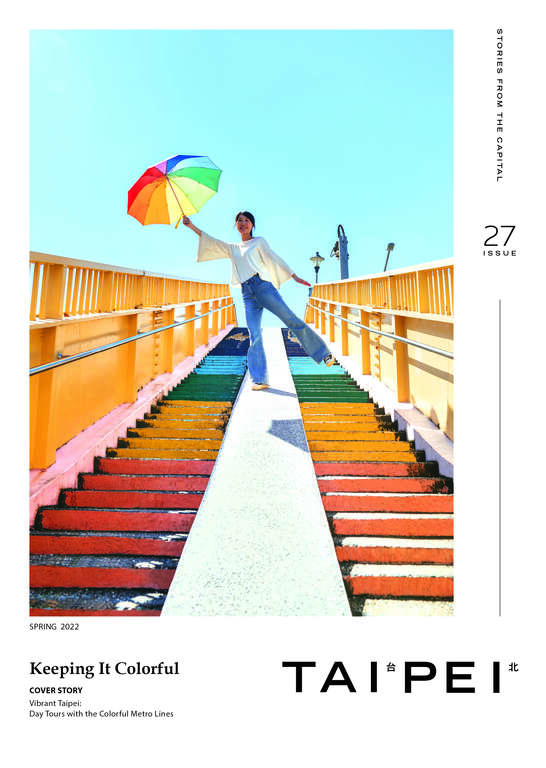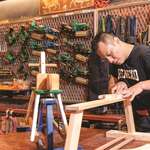Post date:2022-03-15
2051
TAIPEI #27 (2022 Spring)
Brick by Brick: The Spirit of Minnan Architecture in Taipei
Author AYCC
Photographer Taiwan Scene
Red is a color that symbolizes enthusiasm and positivity. In Taipei, it is also a color of times past and the memories therein. A distinctive symbol of traditional Minnan architecture, countless red brick buildings in the city record the changes this place has experienced and bear witness to the evolution of Taipei from generation to generation.
This spring, we take you on a journey through time and trace the origins of traditional Minnan-style architectural culture, walking you through three brick houses in Taipei to experience these nostalgic scenes of this modern city.
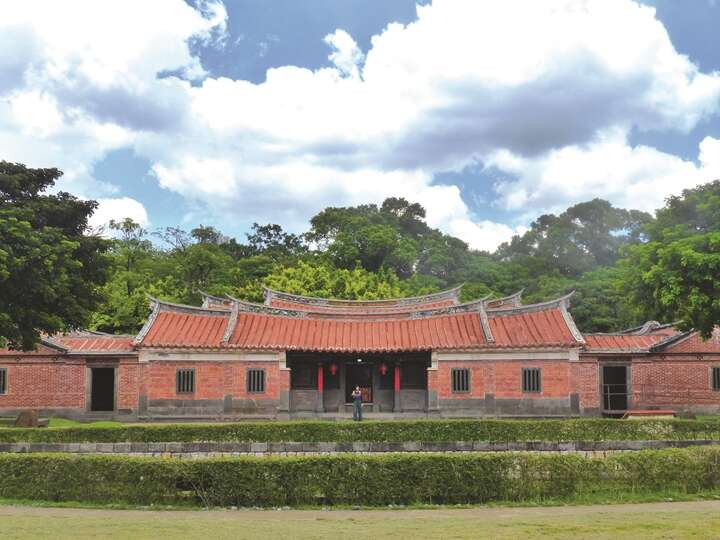
The Origin of Minnan Architecture
Minnan-style architecture, also known as Hokkien architecture, is an architectural style originating in Fujian (福建), a province of southeastern China. When Taiwan was incorporated into the territory of the Qing Dynasty (清朝, 1636 A.D. – 1912 A.D.) in 1684, people from the southeastern coast of China migrated to Taiwan to seek new lives. As such, Hokkien culture gradually took root in various parts of Taiwan and became the local mainstream culture. The cityscapes, including the architectural style, was of course "Minnanlized" after people settled down.
After the colonization of the Qing Dynasty, however, Taiwan was successively ruled by Japan and the Nationalist government. During these subsequent periods, most of the Hokkien-style buildings were destroyed or demolished. Especially in the capital city, a large amount of land was expropriated by the government for urban development. As a result, few Minnan-style buildings remain in the present day, making the existing ones even more precious and special.
Features of Minnan-Style Buildings
The main features of a Minnan-style building are adobe and, without a doubt, red bricks. Timber is also commonly used as the building's structural foundation. In addition, the sloping roof, covered with tiles and doors, and windows made of wooden boards are also frequent features of a Minnan building.
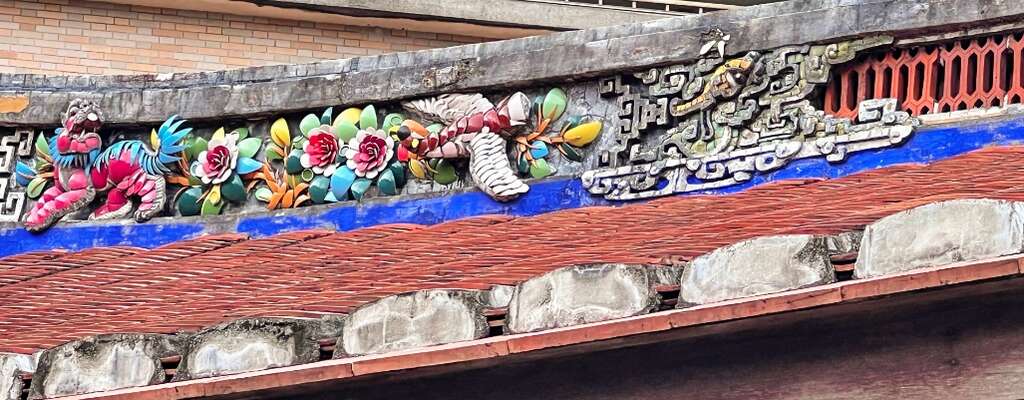
Another distinctive factor in Hokkien architecture is the upward-curving ridge of the roof, which is usually flat in the middle and slightly warped at the left and right ends.
What's more, Minnan-style architecture pays close attention to symmetry and reflects the concepts of ethical, spiritual, and familial superiority and inferiority in Chinese culture. The closer the room is to the central axis, the higher the status. The center is generally a place of worship, and also a space to welcome guests. As for the left and the right sides of the main hall, the rooms are arranged according to seniority and obey the rule of "left, right, left, right."
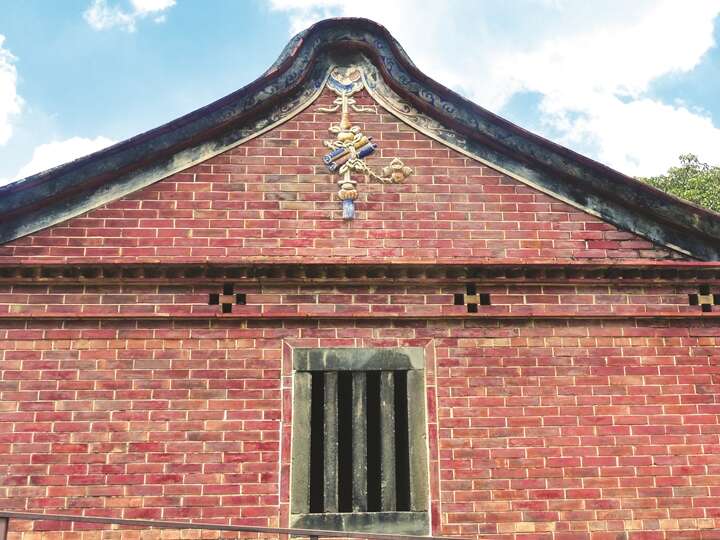
Hence, in a traditional Taiwanese family, the eldest brother lives in the first room of the left wing, while the second son stays in the first room of the right wing. The second room of the left wing belongs to the third son, and if there is a fourth son, you'll find him in the second room of the right wing. This shows that the bigger the family, the larger a Minnan family house will be.
Traditional Minnan Architecture in the Capital
📍Longanpo Huang Family Lianrang Estate 龍安坡黃宅濂讓居
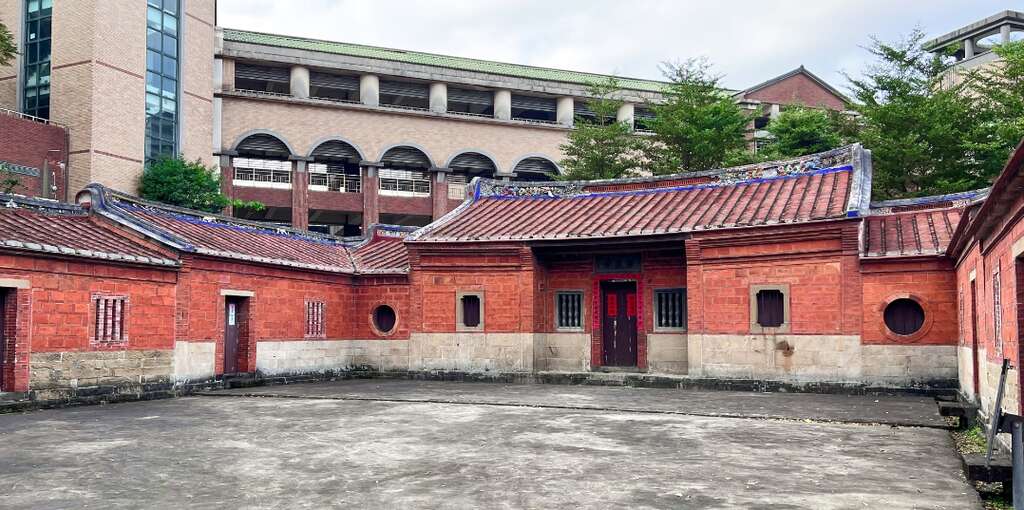
Longanpo Huang Family Lianrang Estate, built in 1897, is a typical Hokkien-style sanheyuan (三合院, a traditional three-sided courtyard residence) hidden within the grounds of a high school in Taipei City. Originally the private residence of the Huang family, a noble family who settled in Taipei almost 300 years ago, it was expropriated by the government in 1999. After integrating with the campus of Long Men Junior High School (龍門國中), the traditional red brick house has become a designated historic site in Taipei.
The wall of the Lianrang Estate was built from granite shipped from China. The horseback-style roof, Begonia-pattern stone window, and moon-shaped window were all designed in accordance with traditional Hokkien architectural style. The roof is similar to the swallowtail, but lacks the luxurious characteristics of the latter, since it was most commonly made for dwellings of common people.
The Huang family used to be tenant farmers in Taipei, but after generations and generations, they became one of the biggest landlords in the neighborhood. Every year around Tomb Sweeping Day, the Huangs still come back to Lianrang Estate to worship their ancestors. The private house is now also open to the public, allowing visitors and children to picture the scenery of ancient Taipei, where harmony lies in a nostalgic courtyard surrounded by concrete skyscrapers.
📍Beimen 北門
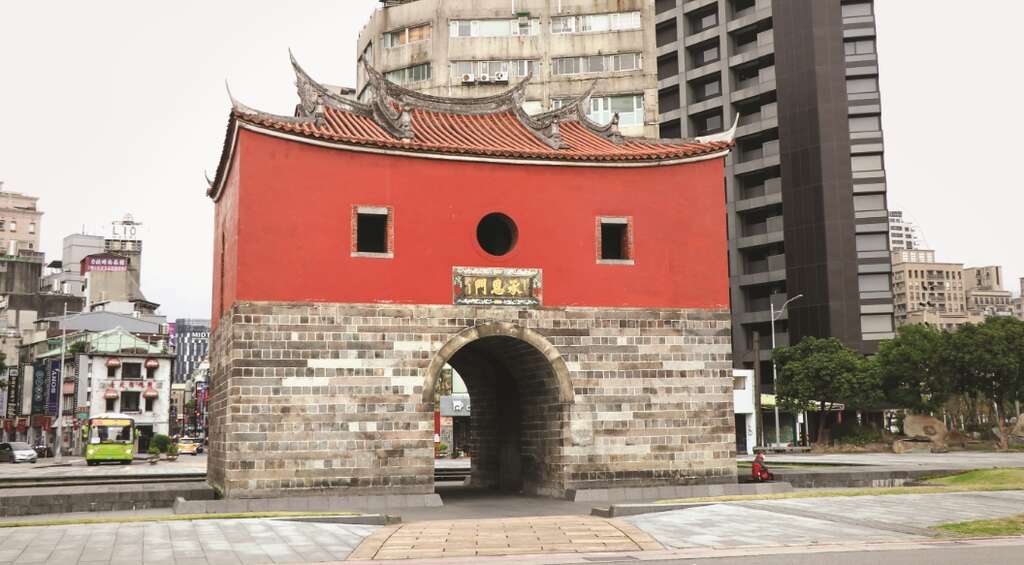
Beimen, also known as the North Gate, was constructed in 1884. During the Qing Dynasty, it was formally called Cheng'en Gate (承恩門), and served as the northern gateway to Taipei City. Beimen is one of the few remaining official Qing Dynasty buildings in downtown Taipei, and is the only one that completely preserves the original appearance of Minnan architectural features among the five city gates.
The structure is a traditional two-story gatehouse, with its outer wall made of red brick, and the stone of the pedestal stacked with andesite taken from the mountainous area in Dazhi (大直), Taipei. The roof of Beimen is representative of the Xieshan-style (歇山式) roof, which is a common type of roof in Minnan architecture consisting of a hipped roof that slopes down on all four sides. In accordance with urban planning and renewal initiatives being launched in Taipei nowadays, a plaza-like open space around the beautiful city gate was built, making the area one of the best sites to admire this historical landmark in Taipei.
📍Lin An Tai Historical House 林安泰古厝
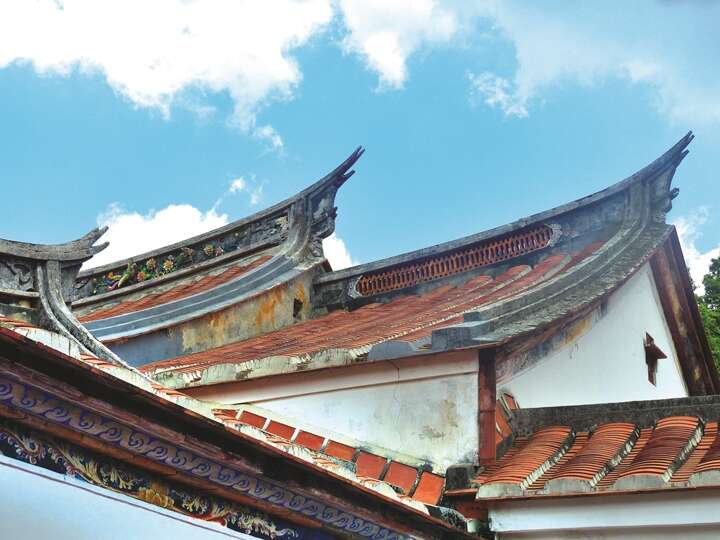
Lin An Tai Historical House was built in 1783 during the Qing Dynasty, and is the most well-preserved Hokkien-style residential building in Taipei in the present day. It was originally located in Daan District, but relocated to Binjiang Park (濱江公園) in Zhongshan District as part of an urban planning scheme.
The Lin family was once one of the richest families in Taipei, running a cross-strait shipping business, specializing in the sale of grains, silk and tea. Their wealth is vividly reflected in their family mansion. One of the features of Lin An Tai Historical House is the luxurious "sparrowtail" ridges. "Sparrowtail" refers to the curve of the roof that turns up at the eaves, and is often decorated with lavish ornamentation.
The carvings on the door and wall are also exquisite and gorgeous. For example, there are auspicious symbols such as flowers, a flying phoenix, Guqin (古琴, Chinese musical instrument) and Kuilong (夔龍, ancient Chinese mythological animal) under the eaves. This magnificent piece of design work, with its meticulous decoration, has become one of the most popular attractions in Taipei, exhibiting the beauty of Minnan architecture from the Taiwan capital to the world.
Gallery
Popular articles
 A Carpenter's Love of Heritage Houses in Taipei (TAIPEI Quarterly 2022 Spring Vol.27)
A Carpenter's Love of Heritage Houses in Taipei (TAIPEI Quarterly 2022 Spring Vol.27) A Handmade Tofu Shop in Taipei: Serving the Ultimate "White Platinum" Delicacy (TAIPEI Quarterly 2022 Spring Vol.27)
A Handmade Tofu Shop in Taipei: Serving the Ultimate "White Platinum" Delicacy (TAIPEI Quarterly 2022 Spring Vol.27) TAIPEI Quarterly 2022 Spring Vol.27
TAIPEI Quarterly 2022 Spring Vol.27 Black as Night and Sweet as Love: The Flavor of Taiwanese Coffee (TAIPEI Quarterly 2022 Spring Vol.27)
Black as Night and Sweet as Love: The Flavor of Taiwanese Coffee (TAIPEI Quarterly 2022 Spring Vol.27) Taipei's Hot Spring Hot Spot (TAIPEI Quarterly 2022 Spring Vol.27)
Taipei's Hot Spring Hot Spot (TAIPEI Quarterly 2022 Spring Vol.27) A Quest for Spring Flowers: Purple Blossoms Throughout Taipei (TAIPEI Quarterly 2022 Spring Vol.27)
A Quest for Spring Flowers: Purple Blossoms Throughout Taipei (TAIPEI Quarterly 2022 Spring Vol.27)
 Brick by Brick: The Spirit of Minnan Architecture in Taipei (TAIPEI Quarterly 2022 Spring Vol.27)
Brick by Brick: The Spirit of Minnan Architecture in Taipei (TAIPEI Quarterly 2022 Spring Vol.27)